 |
| March 26, 2013 | Volume 09 Issue 12 |
Designfax weekly eMagazine
Archives
Partners
Manufacturing Center
Product Spotlight
Modern Applications News
Metalworking Ideas For
Today's Job Shops
Tooling and Production
Strategies for large
metalworking plants
3M 25-year light bulb requires unique die-cast components
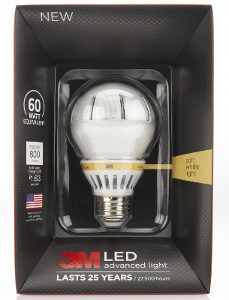
3M's LED Advanced Light has a projected lifespan of 25 years and an estimated energy cost of $1.63 per year. Proprietary light guide technology permits the bulb to imitate the light distribution of an incandescent bulb.
When 3M began the design and development of its new 25-year LED light bulb, there were a number of aluminum components in the design that, in large volumes, would ultimately be too costly to allow for secondary machining and would require net-shape, high-pressure aluminum die casting.
Custom die-caster Pace Industries was selected by 3M to be a part of the design team that would develop the prototype and production die-cast tooling for the unique LED light bulb. Pace Industries' St. Paul (MN) Division had worked with 3M in the past as a supplier for a number of aluminum die-cast components used in 3M's glue guns and other products. The St. Paul Division is located near where 3M was developing the prototype light bulb designs, which allowed a good close-working relationship for the project engineers and the die designers to assist in the prototype and development process.
About the 3M 25-year LED bulb
The 3M LED Advanced Light is the company's first venture into the home light bulb category. The 13-W (60-W incandescent equivalent) omnidirectional light bulb design applies solid-state lighting technology to provide a predicted 25 years of use and an estimated energy cost of $1.63 per year. The lamp produces 800 lm and is being sold in a 3,000K CCT soft-white version and a 4,000K cool-white version.
The light bulb has a very unique design that places the driver in a spacious globe and not in the neck of the lamp. This allows air to flow into the lamp just above the base and exit through slots in the upper half of the globe, cooling both the LEDs and the driver. The LEDs are mounted facing upwards around the circumference of the neck of the lamp, which is a pretty cool, inside-out design from the way that bulbs have been manufactured in the past.
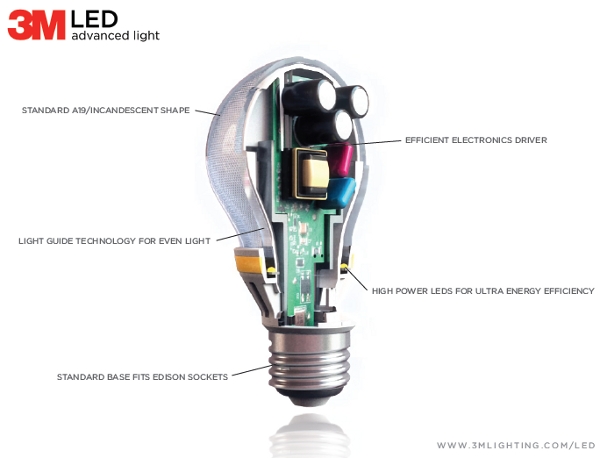
Proprietary light guide technology permits the 3M LED Advanced Light to imitate the light distribution of an incandescent bulb. A combination of the light guide, multilayered optical film, optical adhesives and heat-management technologies allows for 75 percent of the bulb surface to emanate light. As a result, light is comfortably and evenly distributed throughout any room in the home rather than concentrating in one direction like many other LED bulbs on the market.
There are 9 LEDs for the cool-white version and 10 LEDS for the soft-white version. 3M has designed the light guide that forms the outer structure of the lamp to use total internal reflection technology to distribute light around the globe. The light-extraction elements are created with white paint on the inside of the light guide, which causes beams to reflect outside the lamp in an omnidirectional fashion. The super-efficient 3M light bulbs cost $25 each and are available at select Wal-Mart stores.
3M LED Advanced Light bulbs are made in New Ulm, MN, with globally sourced materials.
About the die casting
Eric Waa, Pace's St. Paul Division chief die casting engineer, says that it was about an 18-month process to ultimately finalize the design of the production parts. A number of iterations of the tooling evolved during the die-casting development and design-for-manufacture process.
Because some of these components are small, thin-walled die castings, the tooling presented some interesting challenges. There are four different components, including a heat sink core, the heat sink top and bottom, and a light ring." The die castings are an aluminum A380 alloy material.
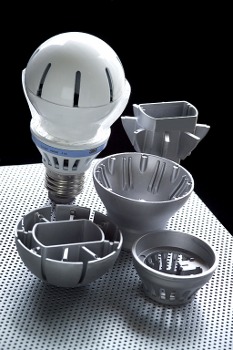
Pace Industries is providing four different components for the 3M LED light bulb: a heat sink core, the heat sink top and bottom, and a light ring.
"The supplier/customer relationship during this project was smooth and effective," says Waa. "There have never been any issues related to the investment that was required for prototype tooling or the final production tooling. The tooling monies were planned for, and made available for each phase of the development process, as we worked each time to maximize and achieve reduced manufacturing costs. That's not always the case with every customer."
Chuck DeVore, the program engineer from 3M's Design & Engineering Solutions division that assisted in the development of the Advanced LED light bulb, points out, "We brought Pace Industries into the design process and on to the design team early so we could take advantage of their die-cast tooling knowledge and provide the creative solutions and available options that both the prototype tooling and the production tooling would require. We were well aware that there would be a number of design changes along the way, but we wanted to minimize, as best we could, the design-to-manufacture time frame."
"To be as cost-conscience as possible during the prototype process, we designed our tooling with inserts so we could maximize the use of re-useable components and accommodate the next generation of size configurations," says Waa.
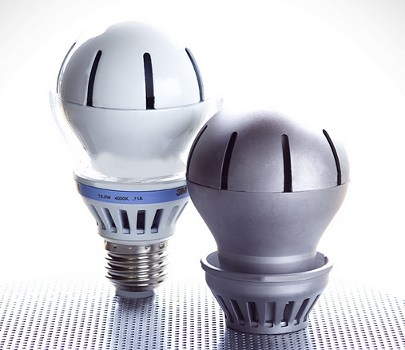
3M light bulb, left. Configuration of components, right.
"We were well aware that part geometry was going to change, but we wanted to save time in what we had to re-build. The initial prototype part dies were a two-cavity-family die design, so we could accommodate the four individual part numbers, two in each mold. As production ramps up, we will move to four-cavity molds where we can make eight parts with each shot. We have been given a target market price for these parts and are confident we will be on that number."
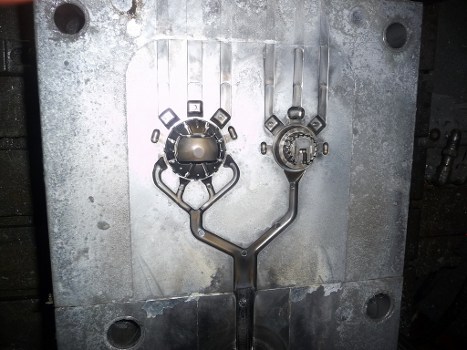
One of the die-cast prototype molds.
"The required dimensional tolerances on these parts are fairly typical for their size, keeping in mind that some parts will ultimately be painted for reflectivity," Waa adds. "However, the wall thickness requirement is 0.070 in. to 0.080 in., and that's pretty thin."
"We've currently provided 75,000 sets of die castings for 3M's initial test marketing phase and are working with 3M to coordinate the tooling schedules with their production schedules for each light bulb design and size," says Waa.
About Pace Industries
Pace Industries was founded in 1970 as an integrated company that provides quality die casting, manufacturing and engineering solutions worldwide. Pace is North America's largest custom aluminum die caster, as well as a provider of comprehensive die casting services in magnesium and zinc. The company has 10 separate divisions, 15 manufacturing facilities, and more than 2,500 associates across the US and Mexico.
Sources: Pace Industries, 3M
Published March 2013
Rate this article
View our terms of use and privacy policy
